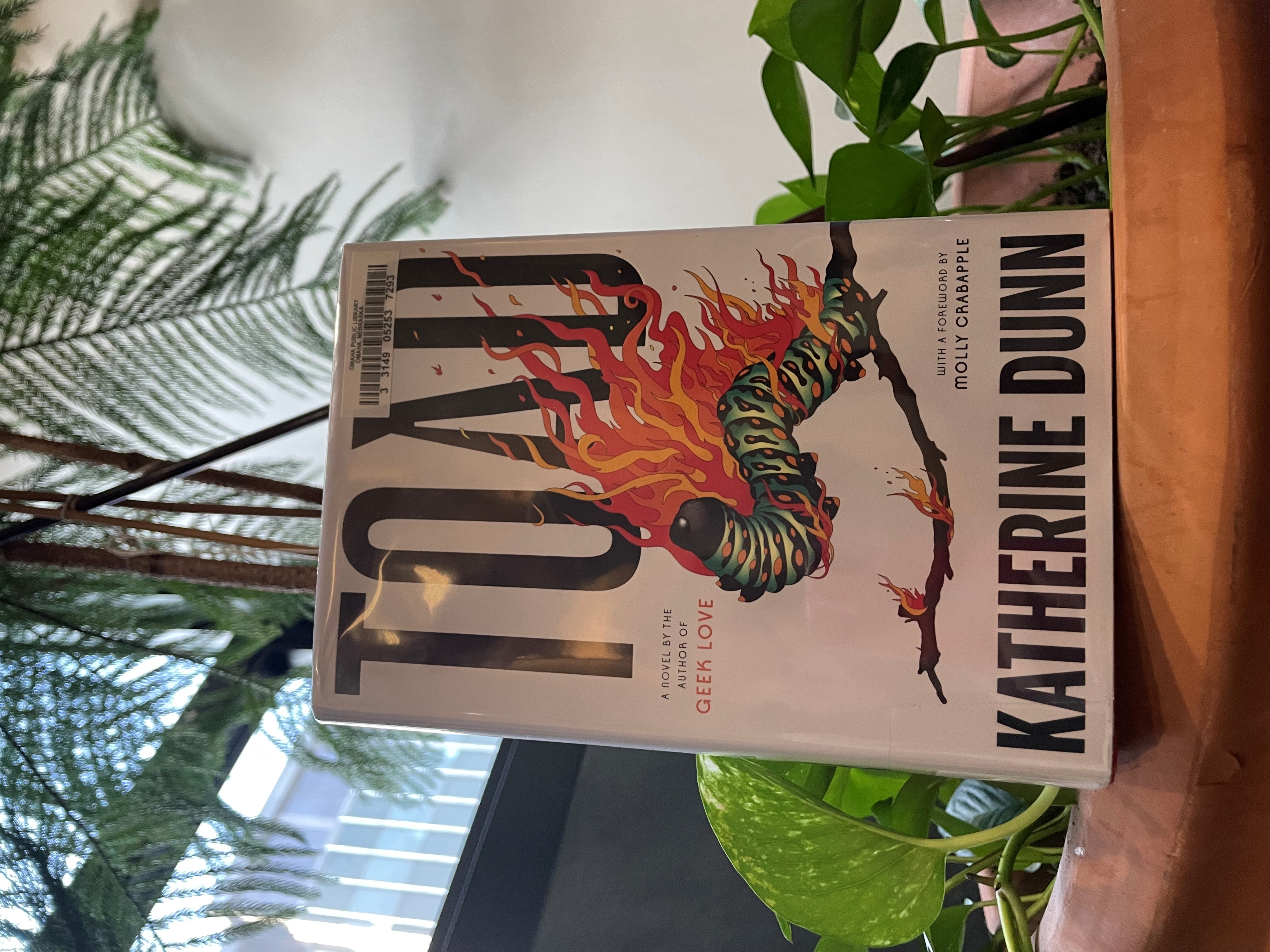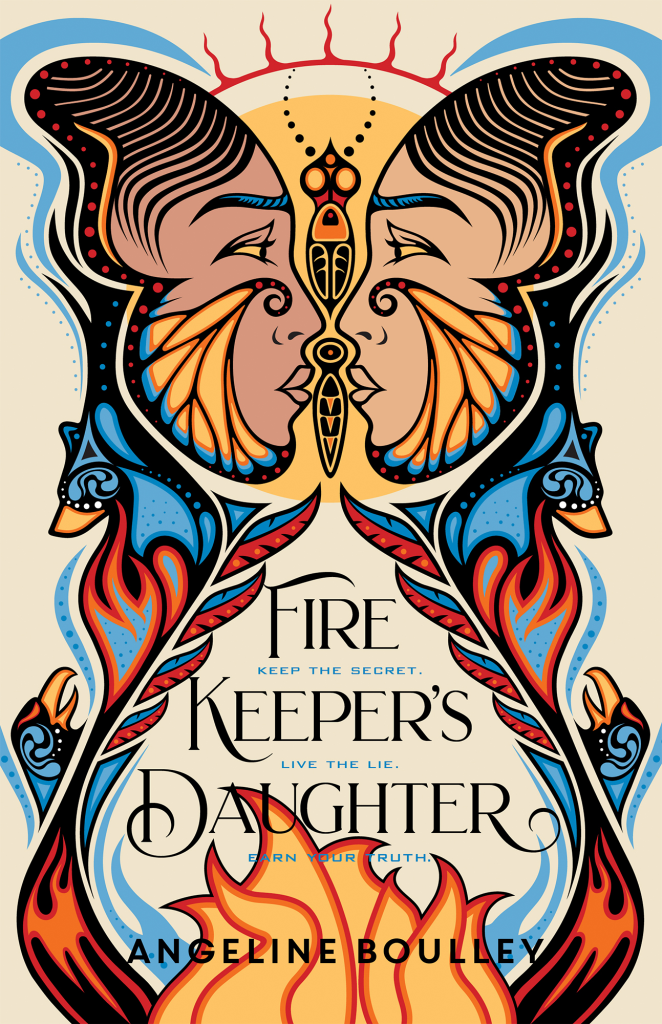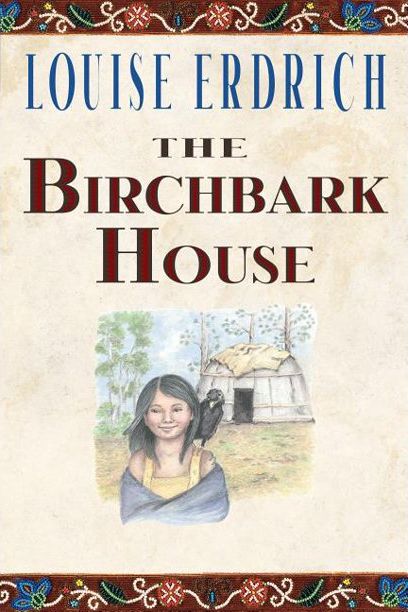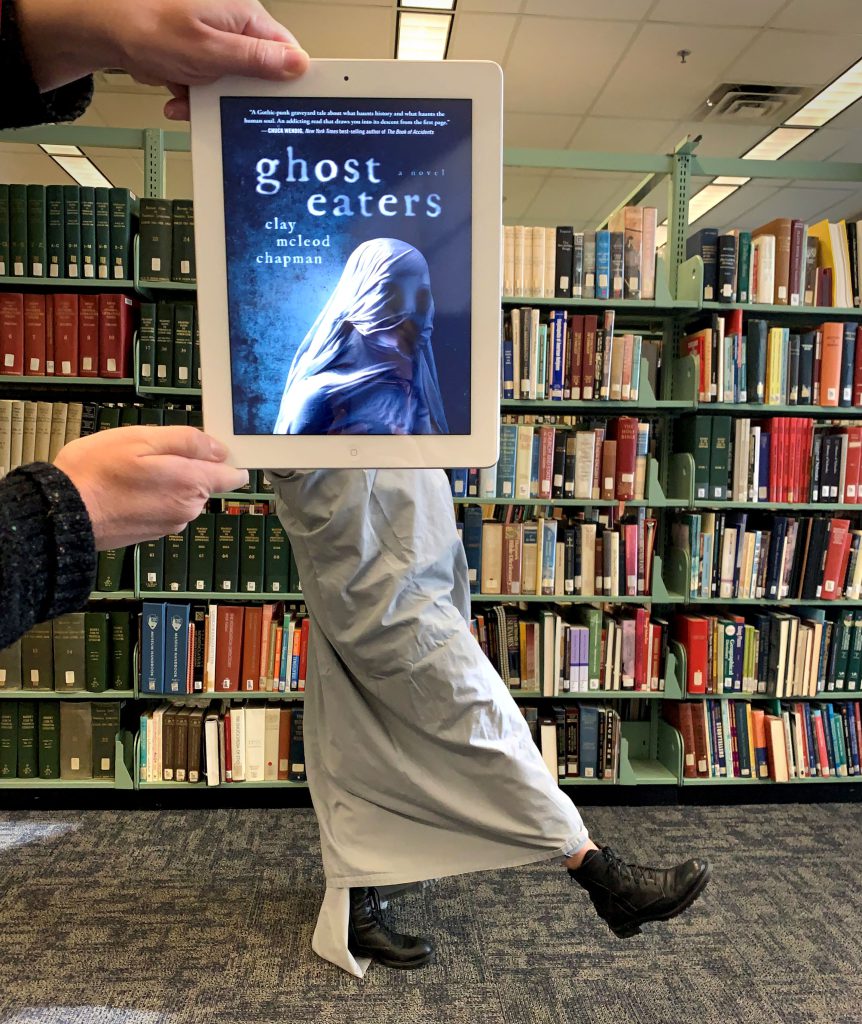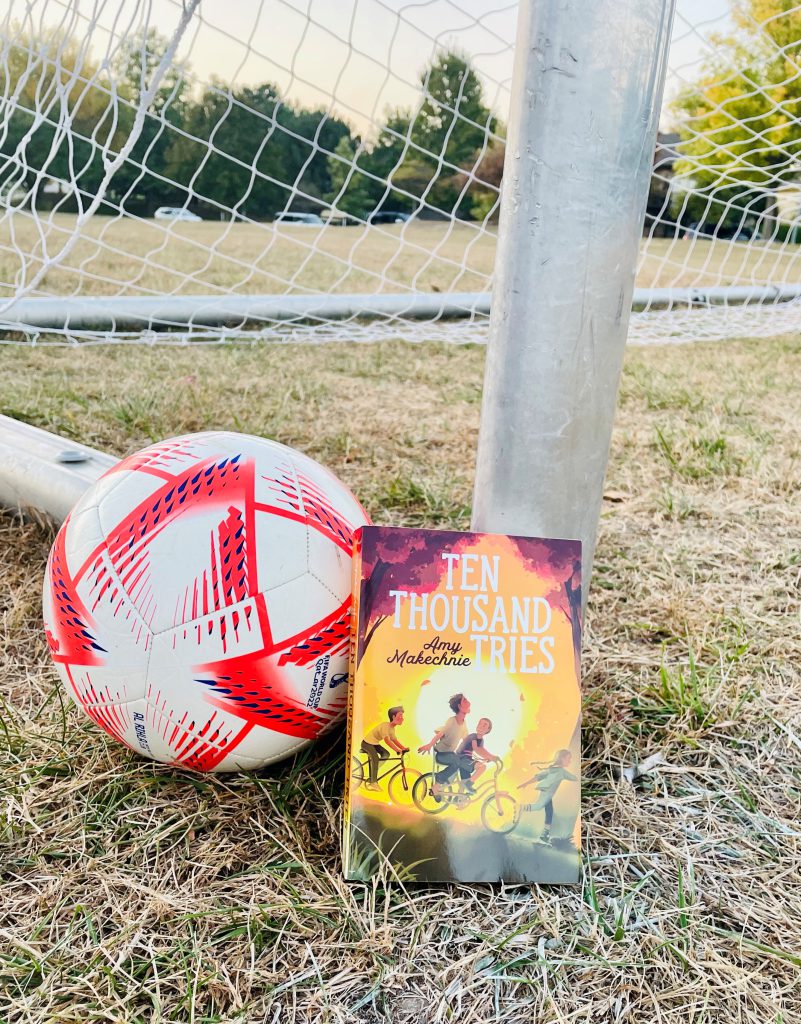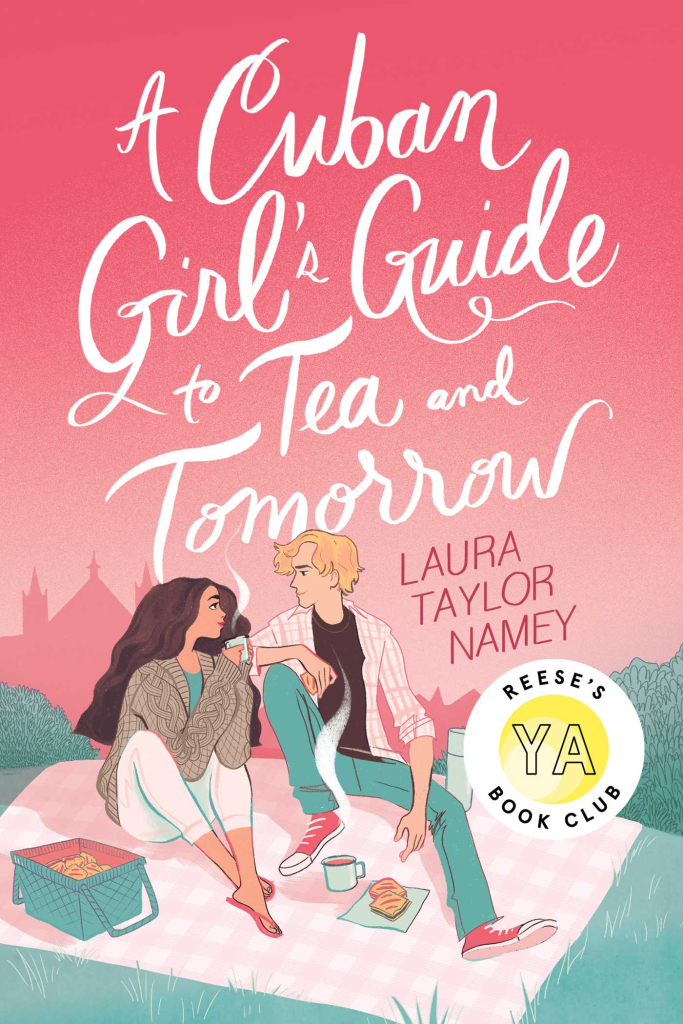Search the Blog
Categories
- Books & Reading
- Broadband Buzz
- Census
- Education & Training
- General
- Grants
- Information Resources
- Library Management
- Nebraska Center for the Book
- Nebraska Libraries on the Web
- Nebraska Memories
- Now hiring @ your library
- Preservation
- Pretty Sweet Tech
- Programming
- Public Library Boards of Trustees
- Public Relations
- Talking Book & Braille Service (TBBS)
- Technology
- Uncategorized
- What's Up Doc / Govdocs
- Youth Services
Archives
Subscribe
Tag Archives: books
Book Club Spotlight – I Have Always Been Me

During Black History Month, we’re showcasing books by some incredible authors to celebrate Black voices in literature. And this week’s highlighted book, I Have Always Been Me by Precious Brady-Davis, is a bold coming-of-age and coming-of-self story set in a familiar locale. Born and raised in Omaha, Brady-Davis serves as the director of communications at the Sierra Club, a Diversity and Inclusion Consultant, and an LGBT+ and HIV activist. She was the first publicly out transgender woman on TLC’s Say Yes to the Dress and was featured on another TLC show, “My Pregnant Husband: documenting her and her husband’s journey to having a child together as a trans couple.
Precious was often the odd one out in her family and her Omaha community. Assigned as male at birth and growing up being perceived as one, she knew that her innate femininity was leading to bullying and unwanted attention. Being moved around between family members, foster care, and schools, it wasn’t until she started attending UNL that Precious began performing drag and was able to embrace the more authentic side of herself. During her education, Precious found her talent and love for diversity and inclusion advocacy through local programs and support from her peers and teachers. However, she had to reckon with her empathy and love for all people with what she was taught at home and in church. Precious recounts her intimate relationship with religion that shaped her youth and how it led to her continued ostracization by people she felt the closest to due to her gender nonconformity. And her reckoning between these two worlds that seemed so disparate is found to be fundamentally a part of her person. Eventually moving to Chicago to finish school at Columbia College, Precious continued to find and foster her queer identity, finally coming to herself as a trans woman and devoting her life to advocacy work, eventually falling in love and fully cementing her foundation for an incredible future ahead.
“For all of us who have been marginalized, who have been abandoned by those who are meant to love us, who have been damned by those who are meant to bless us, who have been looked at with disgust and told that we are wrong, that we are sinful, that we are abominations, now is the time to go forth and be fierce with clear intent while standing tall, showing that marginalized folks aren’t going anywhere as we activate our power.”
Precious Brady-Davis
I Have Always Been Me is a well-known tale of how a person can desperately search for a community as a child but be turned away at every corner. And it isn’t until they are introduced to the world of unconditional acceptance that they finally have the tools to escape survival mode to grow and flourish. While the subject may be new, the story will feel familiar to members of an adult or mature young-adult book group and can open the floor to discussion on the different ways people can be made to feel like outsiders and how vital community support is for disenfranchised young people. Stories like Brady-Davis’s are pivotal in normalizing and loving trans people, especially Black Trans women in Nebraska. Reading the interpersonal stories of affected people, like with any other minority group, lends a bigger picture to the conversation in ways only literature can and showcases the incredible resilience needed to simply be yourself.
If you’re interested in requesting I Have Always Been Me for your book club, you can find the Book Club Kit Request Form here. There are 10 copies available (A librarian must request items)
To see more of our Black Voices book club titles, visit here
Brady-Davis, Precious. I Have Always Been Me. TOPPLE Books. 2021.
Posted in Books & Reading
Tagged Black Voices, book club spotlight, books, Nebraska Author, Reading
Leave a comment
Book Club Spotlight – Long Way Down

It’s our first Book Club Spotlight of Black History Month, which means this month, we’re showcasing books by incredible authors to celebrate Black Voices in literature. Today’s author, Jason Reynolds, is the recipient of awards such as the NAACP Image Award and multiple Coretta Scott King honors and was the 2020-2022 National Ambassador for Young People’s Literature. Reynolds encourages us not to see the genre of YA as limiting, enjoying the freedom of emotion young people carry to tell good stories. Today’s spotlight, recipient of the Printz and Newbery Honors, Long Way Down, is written in free verse, through snippets of dreams and recollections, as a young boy is visited by the ghosts of his past.
After witnessing his brother’s murder, Will knows what he has to do. Follow The Rules.
1) Don’t Cry 2) Don’t Snitch 3) Get Revenge.
He doesn’t know who created The Rules and when, but he does know that it’s his duty to follow them. Because he knows, or at least he thinks he knows, who killed Shawn. Will finds his brother’s hidden gun, gets on the 8th-floor elevator and presses L. As Will goes further down the elevator, he is visited by those who are gone because of the same Rules he is now going to follow, and he is given a chance to either continue the cycle or break it apart.
“MY MOTHER USED TO SAY
Jason Reynolds
I know you’re young,
gotta get it out
but just remember, when
you’re walking in the nighttime,
make sure the nighttime
ain’t walking into you.”
For ages 12 and above, Long Way Down skillfully employs free verse to weave together an unforgettable story about the cycle of violence, especially in how it affects urban and Black communities. Reynolds prefers not to shy away from realism and challenging topics in his novels because the kids reading them have experienced or will experience the same situations in real life. Reynolds, himself, almost fell victim to the cycle when he was younger, and he uses his real-life experiences and emotions to cut to the core of why violence like this continues to happen. Much like Will’s elevator ride that only takes sixty seconds, but lasts a whole novel, reading Long Way Down, can be taken at whatever pace is comfortable to the reader’s skill level. And as violence in schools continues to be a constant fear, there will be plenty for young reading groups to discuss as the floors tick by.
If you’re interested in requesting Long Way Down for your book club, you can find the Book Club Kit Request Form here. There are 10 copies available (Items must be requested by a librarian)
To read more by Jason Reynolds, check out his Track Series, or, The Boy in the Black Suit (One Book For Nebraska Teens 2019).
Reynolds, Jason. Long Way Down. Atheneum. 2017.
Posted in Books & Reading
Tagged Black History Month, Black Voices, book club spotlight, books, Reading
Leave a comment
Friday Reads: Names for the Sea: Strangers in Iceland by Sarah Moss
When the days are short and it’s too cold to spend much time outdoors, what kind of books do you reach for? I often seek out a travel memoir. Those I connect with most inspire me to reminisce about my own travel or pique my interest in learning more about a place I’ve never been. When looking for a new read to get me through the cold and dreary season, Names for the Sea: Strangers in Iceland jumped out at me. Several people have recently told me about their travels to Iceland and suggested I add it to my ultimate travel wish list, so I decided to download the e-book and learn more.
Names for the Sea isn’t exactly a travel memoir. It is the story of a British family living and working in Reykjavik during 2009-2010, and the stories of Icelanders met during their stay. Author Sarah Moss, is a British novelist and professor of literature who dreamed of living and working in a foreign country. A temporary position at the University of Iceland caught her eye. After she accepted the position, Sarah and her family put most of their possessions into storage and moved to Reykjavik. Sarah’s husband and two young children joined her on the adventure. The first chapters of the book revolved around arranging schooling for the children and various issues pertaining to parenting, settling into a new teaching job, and setting up a home in an unfamiliar place. The book is not just a memoir of their daily life. It is also peppered with stories of various Icelanders who provide a fascinating window into Icelandic history and culture. The Moss family stories and Icelandic narratives don’t always fit together seamlessly, and Sarah’s negativity is a bit tiresome at times. The book’s strengths are the Icelanders’ stories and the Moss family’s sporadic interactions with the land and environment.
“The aurora are unsettling partly because they show the depth of the space, and falsity of our illusion that the sky is two-dimensional, and partly because it’s hard to convince your instinct that something bigger than you and grabbing at the sky isn’t out to get you.”
Sarah had a difficult time settling into Icelandic life. She seemed crippled by various fears including the worry that everyone saw her as a “foreigner,” and that she didn’t fit in. Her fears limited her activities in Iceland, and seemed to impact some of her perceptions. Nevertheless, she had a lot of curiosity about Icelandic history and culture. Her colleagues helped her set up meetings with various people to learn about topics that included elves and ghosts, farm life, culinary history, poverty, politics, Icelandic knitting, and volcanic eruptions. These conversations seemed a bit forced to me, as the interactions didn’t happen organically, and she often centered herself in the stories a bit too much for my liking. The Icelandic stories are fascinating, however, and they piqued my interest in learning more about their culture.
“And when the milk lorry came it would give you three books for that week, and you’d give him the three books that he gave you last week, from the library, and he’d take those to the next farm, so there’d be a continual march of books around the sveit with the milk lorry.”
Sarah heard riveting accounts of previous volcanic eruptions and the Moss family got to experience their own volcanic event with the eruption of Eyjafjallajökull. This volcanic eruption is one of the few events that motivated Sarah to travel outside Reykjavik to experience rural Iceland. The family took few opportunities to explore the greater country during their year. Financial constraints were one of the reasons for their lack of exploration. Iceland was in the midst of recovering from a major financial crisis and prices were extremely high. But Sarah also feared driving outside the city and other fears and negativity also seemed to impact her choices. It was not until they decided to leave Iceland and later return for a vacation, that her attitude shifted and she was more willing to explore beyond Reykjavik. Moss seemed much more content in Iceland as a “tourist” rather than trying to fit in as a resident.
Moss’s attitudes and opinions sometimes seemed self-righteous and she never fully reflected on her own biases. Although she acknowledged that fear and the overwhelming feeling of being “foreign” limited her exploration and participation in Icelandic life, her opinions sometimes appeared to be rooted in the biases of being a outsider who was inexperienced with the climate, culture, and negotiating rural environments. This left me questioning if some of her criticisms were well-researched or were instead impacted by her own fears, biases, and what sometimes seemed like jealousy. I think many travelers or people living in a new place where you don’t speak the language can identify with fears and self-doubt, but there were some things about Sarah Moss that I just didn’t connect with. For me the book was a good reminder that although visiting a new place can make you grateful for certain things in your own homeland, it’s important to check one’s own biases. Approaching new people and cultures with empathy and being open to try things outside one’s comfort zone make travel a much more enjoyable experience.
Although I didn’t always connect with Sarah Moss, I really enjoyed this book overall. Seeing a new place through the eyes of an author who is also an outsider often encourages me to reflect on my approach to travel. The Moss family’s story kept me reading and interested in how they would navigate different challenges like the short winter days and unfamiliar foods. Overall, this book was also an intriguing introduction into Icelandic culture and history, and I definitely want to learn more.
Moss, Sarah. Names for the Sea Strangers in Iceland. Catapult, 2013.
Book Club Spotlight – The Miseducation of Cameron Post

The Miseducation of Cameron Post is a quiet atmospheric story that takes the reader through the formative years of the titular Cameron as she comes into herself as a person and as a lesbian. Written as the dissertation for her Ph.D. at UNL (co-directed by author Timothy Schaffert and the late Gerald Shapiro), emily m. danforth was inspired by sentimentalist women’s literature, stories of teens being sent to religion-based conversion therapy camps, and her own upbringing in Miles City, Montana. Published three years before the federal protection of same-sex marriage, Miseducation’s impact on normalizing queer culture and issues is phenomenal, especially in how it honestly approaches teens and their families in the discovery and acceptance of their sexuality.
Growing up in early 90s Montana, Cameron Post did her best to keep her head down, not wanting anyone to look further than her “wise-cracking orphan” façade. But, if anyone started to look too closely, they would see she was in hiding. Hiding her feelings for other girls. Detailing her loves and loves lost while fogged in religious guilt pushed on her by her ultra-religious aunt, Cameron learns how to keep her true self out of sight. Betrayed and forced out of the closet, the looming threat of being sent to conversion therapy camp becomes a reality. Cameron must endeavor against those who want to change her and find solidarity amongst the powerless teens also caught up in the mess of religious zealotry and homophobia. Cameron’s story is, of course, a “miseducation” at its core. She isn’t some unachievable, idealized-perfect person, and she shouldn’t have to be. Finding yourself is not easy; you have to be prepared to face what finds you in return.
“When you run into yourself, you run into feelings you never thought you had.”
emily m. danforth
Perfect fans of The Perks of Being a Wallflower and John Green, The Miseducation of Cameron Post is appropriate for mature teen and adult book groups. It approaches complex topics with care and empathy. Because it takes place in the 90s, some language is out of date, which opens up room for an interesting group discussion on how we have treated and talked about LGBTQ+ issues and if Cameron’s story would be different if she were a teen today. danforth has the skill to give her characters space to tell their own stories rather than focusing on teaching us a lesson or a hard-hitting moral. Like life, Miseducation revels in its slow pacing. The book is a long scenic road to get where it wants to be. Only a few chapters in, and it feels like you have known Cameron forever.
And if your reading group is interested in a movie night, the 2018 movie adaptation of Miseducation won the Sundance Film Festival Grand Jury Prize for the U.S. Dramatic category. I watched it this weekend, and it was incredible. From a review of the movie in the New York Times: “Miseducation is neither a glib sendup of a less enlightened era nor a pious reckoning with the bygone injustices of the past. It is more interested in how its characters feel than in what they might symbolize, and in how they grapple with the conflicting demands of faith and desire. It’s also about the struggle between earnest young people and the equally earnest, painfully misguided adults who are trying to save their souls”.
To see more of our LGBT+ & Queer book club titles, visit the link here.
If you’re interested in requesting this book for your book club, you can find the Book Club Kit Request Form here. There are 10 copies available (Items must be requested by a librarian)
danforth, m. emily. The Miseducation of Cameron Post. HarperCollins. 2012.
Friday Reads: Toad by Katherine Dunn
I don’t remember how I came to read Katherine Dunn’s cult-classic novel, Geek Love. It is the story of a circus couple and their literally homemade “freak show”; all of their children were purposely subjected to chemicals and drugs in utero in order to produce “show-worthy” birth defects. I was likely still reading The Babysitters Club when it was published in 1989, and while it was being praised by Kurt Cobain and Terry Gilliam, there is little chance it was carried by my small town library. Nonetheless, it eventually popped up on my literary radar and Dunn’s vivid and often grotesque imagery is forever seared into my subconscious. That Tim Burton bought the rights to the book probably says enough.
Geek Love is not the book I’m talking about today. However, without it, I would have probably never given a second glance to Toad.
Toad, published this past fall, 6 years after Dunn’s death, was penned long before she wrote Geek Love. Although she had two previous novels under her belt, this third book was declined by her publisher, and attempts to revise it and shop it around to a new house were unsuccessful. The story is based on Dunn’s experience in 1960s Portland, and having the largely autobiographical work rejected over and over was a blow to Dunn, who eventually shelved the book. She then spent years perfecting her ultimately-acclaimed next project, Geek Love, before submitting it to professional critique. Dunn never did try to find a publisher for Toad again, but after her death, her son Eli was contacted by an editor searching for Dunn’s lesser-known writing and he lent her the manuscript. After she overcame her shock that no one had tried to release the book before her, she helped usher it into print.
Compared to Geek Love, the characters in Toad are almost boringly normal. Sally Dunn, our protagonist, oscillates her narrative between her current life as a near-recluse, alone with her regrets in a small house she pays for with her disability check, and tales of her misspent youth near a college campus in Portland. She tags along after a group of hippie students, with their lofty (often naive) ideals and lack of work ethic, that she seems to simultaneously envy and loathe. She despises them because they come from cushy middle-class backgrounds and choose to live in bohemian squalor, but she despises herself even more for not fitting in, always being the outsider.
There are no heroes in Katherine Dunn’s world – only victims and villains, and they are often one and the same. There is no one to root for, or against, as everyone has the capacity for cruelty, kindness, love, and loss. Sally tells the story, but without the rose-colored glasses through which we often view our good old days. She recognizes that she, too, can be both brutal and benevolent, and that realization is among her reasons for her self-isolation.
At times sad, humorous, honest, and grotesque, Katherine Dunn’s writing is not for everyone. She doesn’t sugarcoat humanity – people can be gross, crass, and annoying. Nonetheless, I’m glad these books crossed my path. Now I need to go wash my hands.
Dunn, Katherine. Toad, New York, New York : Farrar, Straus and Giroux, 2022.
Posted in Books & Reading, General
Tagged 1960s, books, Friday Reads, Geek Love, Katherine Dunn, Portland, Reading, Toad
Leave a comment
Book Club Spotlight – Prairie Lotus
In today’s spotlight, we will continue our look back to the historic American frontier and the people who shaped it. If you, like me, grew up in the early 2000s, chances are you’ve read a book by Linda Sue Park. Her Newberry Award Winning novel, A Single Shard and Project Mulberry, were some of my absolute favorite books in middle school, and I was over the moon to learn that she is still writing! Our book today, Prairie Lotus, is a new addition to our collection and is the most recent in Linda Sue Park’s bibliography. Being a 2021-22 Golden Sower Novel Nominee, Prairie Lotus has also earned a Children’s Literature Award Honor from the Asian/Pacific American Librarians Association. In addition to being an esteemed author, Park is the founder and curator of Allida Books (a HarperCollins imprint) and a board member for the non-profit We Need Diverse Books and the Rabbit hOle museum project.
At the beginning of Prairie Lotus, Hanna has three goals, graduate from school, become a dressmaker, and make a real friend. As pioneers, she and her father have been traveling across the west for quite some time when they end up in the small Dakota Territory town of LaForge. Hanna is especially excited to live in town so she can finally attend a real school, just like her late mother dreamed of her doing. But, unfortunately, this isn’t as easy as it sounds. Despite being intelligent and resourceful, Hanna is half-Chinese and faces a lot of discrimination from the white settlers who try to stop her from going to school or even running errands. Refusing to give in to their hate, Hanna now has to figure out how to still graduate from school, prepare for the opening of her father’s store, and keep up with her household chores, all the while dealing with the cruelty from the townsfolk. And she has the strong spirit of the American frontier and the strength of her mother in her corner.
“There were always a hundred reasons for disliking people and not nearly as many for liking them.”
Linda Sue Park
Like The Birchbark House, Prairie Lotus is perfect for young (or adult) readers interested in reading about early American history from a fresh perspective. Exploring life in this pioneer community, we are shown the strength and daily life of the women who settled in the West, and the life of the local Indigenous women, specifically from the Ihanktonwan (Yankton Sioux) tribe. The story purposefully reads similarly to Little House on the Prairie and is heavily influenced by the series (you’ll even see some familiar faces). As a daughter of Korean immigrants, Park says, “Hanna’s story is in many respects a kind of ‘conversation’ with the iconic Little House books written by Laura Ingalls Wilder. As a child, I spent hours imagining that I too lived on the frontier in the 1800s, and that I was Laura’s best friend”. And Park makes no mistake that she wrote the story as a way for her to come to terms with a story she loves while also challenging its more problematic history, which is discussed more in the Author’s Note at the end of the book.
More by Linda Sue Park:
If you’re interested in requesting this book for your book club, you can find the Book Club Kit Request Form here. There are 10 copies available (Items must be requested by a librarian)
Park, Linda Sue. Prairie Lotus. Harper Collins. 2020
Book Club Spotlight – Death Comes for the Archbishop
A new year means new books will be entering the public domain! According to copyright laws, works originating in 1927 will now be free for all to share, use, and create new stories with. For example, last year, the original Winnie-the-Pooh books by A.A. Milne entered the public domain, leading to a new horror movie featuring the characters. So now, in 2023, we have a whole new set of stories to look out for, and today we’ll be talking about one in our very own Book Club collection. Death Comes for the Archbishop is Willa Cather’s re-telling of the lives of Roman Catholic clergymen Jean-Baptiste Lamy and Joseph Projectus Machebeuf as they establish a diocese in the U.S. New Mexico Territory in the 1800s. Cather, preferring to call it a “narrative” rather than a novel, wrote Death Comes for the Archbishop as a cluster of vignettes, legends, and stories surrounding the fictionalized Southwest and how the Catholic Church came to shape the region. But don’t let that frighten you; her book isn’t that of religious zealotry but of the people.
Father Jean Marie Latour, a French Jesuit priest, has been sent off to be the Vicar and Bishop of the newly American-owned New Mexico territory. He, with his close childhood friend Father Joseph Vaillant, attempts to serve their diocese, which often descends into disarray with the Mexican and Native American population content to perform religion in their own way due to the prolonged absence of a Vicar. The men, unused to the harsh New Mexico region, but earnest in their faith, meet and grow fond of their parishioners in the American Southwest, painting a knowledgeable and sympathetic portrait of the times and the people. The intelligent and philosophical Father Latour is open-minded about other cultures and finds human love at the root of his faith. At the same time, his abrupt friend Father Vaillant is much more direct in his faith and actions, which often leads to a more closed-minded approach. Because of this, the two, though immensely fond of each other, find themselves at odds in their passions. Vaillant’s often taking him away on evangelical missions, all the while Latour’s passion keeps him close to home, cultivating deeper bonds there but missing his partner. Together and apart, they explore the vast New Mexico territory, expanding their faith and assisting those in their care.
“Where there is great love there are always miracles,”
Willa Cather
Death Comes for the Archbishop is a quiet and reflective narrative that celebrates communities and cultures coming together while still holding onto their traditions. Not Catholic herself, Cather shows a gentler depiction of religion than her typical portrayal and how it can build a community of not only faith but trust and security. She does not portray the church or even the priests in the novel as perfect but as humans who want to do their best for their parishioners and God. Father Latour is wholly human, makes mistakes, and has his own prejudice, but he never looks down on another person; he advocates for the rights of the Navajos, Mexicans, and all people in his diocese. While the more brash Vaillant is more prone to prejudice, he has his own deep connections in the community as well. And everyone, especially the women, is treated kindly and with reverence, and any biases the priests may have do not bleed into the narration overall. Of course, being a Willa Cather book, any Nebraska book club will have a great time reading one of her classics. Readers will find discussion topics in the many vignette parables scattered throughout the book. While some phrasing or ideas are old, the novel still holds up in its earnestness and love for all people. Modern audiences and book groups will appreciate the sympathetic acknowledgment of the Native and Mexican people whose homes are displaced by white intruders and see how our modern ideals have or have not changed.
To see this year’s list of copyrighted works entering the public domain, visit the link here!
If you’re interested in requesting this book for your book club, you can find the Book Club Kit Request Form here. There are 5 copies available (Items must be requested by a librarian)
Cather, Willa. Death Comes for the Archbishop. Alfred A. Knopf, Inc., 1927
Posted in Books & Reading
Tagged book club spotlight, books, Nebraska Author, Reading, Willa Cather
Leave a comment
#BookFaceFriday – “The Snow Globe” by Sheila Roberts
We’re shaking things up with this week’s #BookFaceFriday!
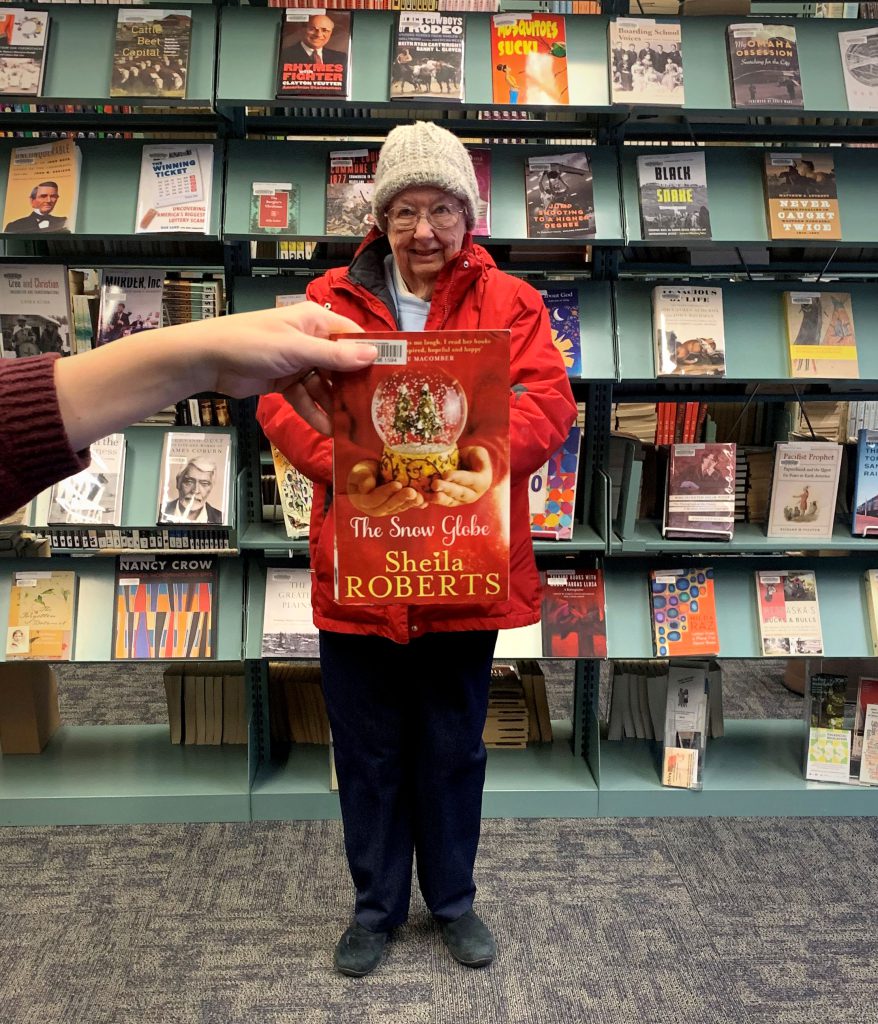
This winter wonderland is making our holiday books feel right at home! Looking for the perfect Hallmark read, reserve a holiday title like “The Snow Globe” by Sheila Roberts (Piatkus, 2014) for your book club! Take a peek
at all of our holiday-themed book club kits today!In the collection we have 114 holiday titles, 81 of which have 4 or more copies. If a library is looking to weed some of their holiday titles – they can think of us because we’re always happy to add to this particular collection!
These titles are very popular in November and December, with some book club groups reserving their choices up to a year in advance! NLC staff keep their eyes peeled for holiday-themed books year-round in order to meet the demand come the first snowfall.
“This lighthearted and charming read will appeal to fans of Kristin Hannah’s magical, light romances and readers who enjoyed Roberts’s previous holiday offerings.”
–Library Journal (Starred Review)
This week’s #BookFace model is Kay, she’s a TBBS Readers Advisor.
Love this #BookFace & reading? Check out our past #BookFaceFriday photos on the Nebraska Library Commission’s Facebook page!
Posted in Books & Reading, General
Tagged Book Club Kits, Book Covers, bookface, bookfacefriday, books, Christmas, Holiday, Sheila Roberts, The Snow Globe
1 Comment
Book Club Spotlight – The Fishermen
While we’re busy getting snowed in this week, you’ll want to hunker down with a good book like this week’s spotlight! During the winter holidays, many of us spend our time around family or loved ones, and The Fishermen by Chigozie Obioma is, first and foremost, a book about family. Written as a love letter to his brothers, Obioma explores the intrinsic connection between siblings and how easily chaos can sow a rift between them. I love sharing books that have a special connection to Nebraska, and The Fishermen, recipient of the 2016 Nebraska Book Award for fiction, is an excellent example of one such book. Born in Nigeria, Chigozie Obioma is currently the James E. Ryan Associate Professor of Creative writing at UNL. The Fishermen, his debut novel, also won the Inaugural FT/Oppenheimer Award for Fiction, the NAACP Image Awards for Debut Literary Work, and was shortlisted for the 2015 Booker Prize.
In 1990s Nigeria, under the dictatorship of Gen. Sani Abacha, there is a family of brothers. Ikenna, the oldest; Boja and Obembe in the middle; and the youngest, Ben as our narrator. When their father moves away for work, the delicate family structure begins to crumble without its leader. In a fit of rebellion, the four boys go behind their mother’s back to fish in a forbidden and polluted river, leaving her clueless, tending to their two youngest siblings. At the river, the boys encounter the town’s prophetic madman, who convinces Ikenna that he will be murdered brutally by one of his siblings. Driven mad by this prophecy, the family suffers the loss of another authority figure, as their eldest brother becomes suspicious, anxious, and even violent toward them. So, the four brothers, like Cain and Abel before them, are plunged into turmoil, testing their bond and loyalty to the bitter end.
“I heard someone say that the end of most things often bears a resemblance- even if faint- to their beginnings”
– Chigozie Obioma
Perfect for an adult book group that enjoys character-driven plots that tell a deeper story, The Fishermen is rife with metaphors and parables from Obioma’s Igbo roots. Described as “an essential novel about Africa with all of its contradictions—economic, political and religious—and the epic beauty of its own culture,” each of the brothers represents the four major tribes of Nigeria and how the political tumult in the country led to unrest between them. Even though the novel is an allegory for and takes place during a dangerous time in Nigeria’s history, this is not a historical war novel. While affected and aware of the situation, the children are more invested in their interpersonal lives rather than politics. This style reminds me of the show Derry Girls in how it isn’t only addressing issues in a political sense but also in a personal sense. And in this book is about strife and torn bonds, Obioma delivers hope for the future resting on the next generation’s unmarred shoulders.
If you’re interested in requesting this book for your book club, you can find the Book Club Kit Request Form here. There are 20 copies available with large print and audio CD (Items must be requested by a librarian)
Obioman, Chigozie. The Fishermen. Little, Brown and Company. 2015.
#BookFaceFriday – “Cold” by Mariko Tamaki
This #BookFace is ice cold!

With the wintery weather all across the state, we couldn’t think of a more fitting book for this week’s #BookFaceFriday! The perfect ebook to cozy up with is “Cold: A Novel” by Mariko Tamaki (Roaring Brook Press, 2022.) A suspenseful teen read about murder in a small town, perfect for fans of Pretty Little Liars or One of Us is Lying. And because this title is available as an eBook on Nebraska OverDrive Libraries you won’t even have to leave the house to check it out. Find this title and more winter reads available to Nebraska OverDrive Libraries.
“Sharp and authentic, Cold doesn’t just take its title from the chill of a wintry day but also from the cruelty and isolation of adolescence. Readers who love intense, suspenseful storytelling will devour it in one sitting.”
—BookPage
Libraries participating in the Nebraska OverDrive Libraries Group currently have access to a shared and growing collection of digital downloadable audiobooks and eBooks. 189 libraries across the state share the Nebraska OverDrive collection of 21,696 audiobooks, 35,200 eBooks, and 3,964 magazines. As an added bonus it includes 130 podcasts that are always available with simultaneous use (SU), as well as SU ebooks and audiobook titles that publishers have made available for a limited time. If you’re a part of it, let your users know about this great title, and if you’re not a member yet, find more information about participating in Nebraska Overdrive Libraries!
Love this #BookFace & reading? Check out our past #BookFaceFriday photos on the Nebraska Library Commission’s Facebook page!
Posted in Books & Reading, General
Tagged Book Covers, bookface, bookfacefriday, books, Cold: A Novel, Ebook, Mariko Tamaki, Nebraska OverDrive Libraries, OverDrive, Reading
Leave a comment
Book Club Spotlight – Outside Valentine

For 60 days in the winter of 1957-1958, Charles Starkweather and Caril Ann Fugate raced across Nebraska and Wyoming, leaving 11 dead in their wake. As one of America’s most infamous and widely-reported killing sprees, Starkweather and Fugate are immortalized through movies, music, and literature. And Liza Ward, the granddaughter of two victims, Lauer and Clara Ward, decided it was time to tell the story from a new perspective. Her 2004 novel Outside Valentine is the story of her family and the trauma that has consumed it for generations. But instead of focusing on the notorious Starkweather, this novel takes a step back, concentrating on Caril Ann and those he left behind in a stunning re-telling of what happened that winter.
Outside Valentine is a fictional account of the Starkweather killing spree, following the three narrators simultaneously. One narrator, Caril Ann Fugate, is a disenfranchised impressionable 14-year-old who finds solace and a desperate love with 19-year-old Charles Starkweather. Their romance soon burns too hot when he takes Caril on a joyride, murdering her family and anyone found in the way of that love. Four years later, the story follows Susan Hurst, who finds herself obsessively reading about the killing spree, envious of the pair’s violent love. Desperate for this kind of love and recognition, she lives a lonely life with her emotionally distant parents, all the while harboring a secret obsession for the surviving son of the Bowmans (the fictionalized Lauer and Clara Ward), whom she has never met. The son, Lowell Bowman, is our third narrator, who, 30 years later, is still dealing with the aftermath of the tragedy. Unable to cope, he runs away from his wife and children, both from and to his past.
“There was no doubt to me he wouldn’t care. He’d blow up the world for a stuffed dog, if he thought I wanted it enough.”
Liza Ward
Outside Valentine is an engaging and lyrical read that isn’t quite “true crime” but still has that thrilling air. Because the story takes place over 30 years, the reader follows how Fugate and Starkweather’s actions spiral bigger than just themselves. Ward creates an atmosphere that sucks you in so deeply and wholly that you forget where you are. And the stark winter setting makes this a perfect book club selection coming into the colder months. Book club groups, especially those here in Nebraska, will find plenty to discuss in how Ward uses the setting to instill her characters with deep longing and isolation. She does an incredible job of identifying the true loneliness of being a young girl and the dark side of romanticism.
While both were found guilty and Starkweather sentenced to death, Caril Ann Fugate spent 17 years in prison on a murder conviction before she was paroled in 1976. In 2020, With her father’s support, Liza Ward advocated for Fugate’s pardon, believing her grandparents “would want people to know the truth,” and that it is “time to show that young girl’s stories are worth being listened to.” And she gives young girls that opportunity in Outside Valentine.
If you’re interested in requesting this book for your book club, you can find the Book Club Kit Request Form here. There are 12 copies available (Items must be requested by a librarian)
Ward, Liza. Outside Valentine. Picador. 2004.
Posted in Books & Reading
Tagged book club spotlight, books, Nebraska History, Reading
Leave a comment
Book Club Spotlight – Native American Heritage Month
For November, we are spotlighting titles in our Book Club Collection written by Indigenous authors for Native American Heritage Month. In 1976 Cherokee-Osage Native American Jerry C. Elliott-High Eagle authored the Congressional legislation for Native American Awareness week, which grew into what we now celebrate as Native American Heritage Month in 1990 with a declaration from then-President George H.W. Bush. This month is a great opportunity to read and learn about whose ancestral land you live on, their history, colonization, and all the incredible works of Indigenous art and literature.
Past Book Club Spotlights featuring Native American Authors:
Firekeeper’s Daughter by Angeline Boulley
18-year-old Daunis Fontaine is the product of a scandal between a white woman and an Ojibwe man. Even though her mother’s family is well-respected, and her father’s side are revered Firekeepers, Daunis is an outsider. She is not welcome in her predominantly white town or at the reservation, where tribal leaders deny her parentage and membership. But when murders and overdoses related to drug trafficking slowly spread around Michigan’s Upper Peninsula, Daunis is witness to it all. Now she must team up with the new (and mysterious) star hockey player to use her knowledge of science, Ojibwe medicine, and these tight-knit communities to uncover long-held secrets.
____
The Birchbark House by Louise Erdrich
Excitable and brave spirited, Omakayas, or Little Frog, is a young Ojibwe girl who lives with her family near present-day Lake Superior. As white people begin to take over the land, Omakays and her siblings continue their way of life while the adults fear that they must move soon. We follow the local community as they survive, learn important lessons and skills, and enjoy a peaceful life together. But when a sickly visitor crashes a powwow one night, he brings deadly smallpox to the area; and the course of the community and Omakayas’ life are changed forever.
_____
You can find a list of both our fiction and non-fiction titles on our Book Club Kit page under the Native American Voices keyword.
“And while I stood there I saw more than I can tell, and I understood more than I saw; for I was seeing in a sacred manner the shapes of things in the spirit, and the shape of all shapes as they must live together like one being.”
– Black elk
Black Elk Speaks (One book One Nebraska 2017)
And if like me, you’re excited about the food-heavy holidays, we have a few foody titles in our collection that your club might be interested in as well:

Jasmine Toguchi: Mochi Queen by Debbie Michiko Florence
Kitchen Confidential by Anthony Bourdain
Posted in Books & Reading
Tagged book club spotlight, books, Native American Literature
Leave a comment
Book Club Spotlight – The Birchbark House
November is Native American Heritage Month, and I’m excited to spotlight books written by Indigenous authors in our collection. As we go into the month of Thanksgiving, it’s important to remember the people who were here first and the sacred land we are on. Today, we will focus on a story of a young girl in the Northern Midwest on traditional Ojibwe land. The Birchbark House, by Chippewa woman Louise Erdrich, began as a story she would tell to her daughters. Wanting to show the love, community, and humanity that represents Native American culture rather than the negative depictions, Erdrich published the story, which went on to win the WILLA Literary Award in 2000.
Excitable and brave spirited, Omakayas, or Little Frog, is a young Ojibwe girl who lives with her family near present-day Lake Superior. As white people begin to take over the land, Omakays and her siblings continue their way of life while the adults fear that they must move soon. We follow the local community as they survive, learn important lessons and skills, and enjoy a peaceful life together. But when a sickly visitor crashes a powwow one night, he brings deadly smallpox to the area; and the course of the community and Omakayas’ life are changed forever.
“Like Andeg, she couldn’t help being just who she was. Omakayas, in this skin, in this place, in this time. Nobody else. No matter what, she wouldn’t ever be another person or really know the thoughts of anyone but her own self.”
Louise Erdrich
The Birchbark House is the first in the series chronicling the life of Omakayas’ family over 100 years. This novel is perfect for a young book group who wants to read stories like The Little House on the Prairie but through the lens of a young Indigenous girl instead. It is also an interesting read for adult groups who want to learn more about Indigenous culture pre-colonization. The story is brought to life through beautiful illustrations by the author and stories taken from her own life and family. Often the action will stop, and the reader is fully engrossed in the storytelling of an elder. Through this, Erdrich shows the reverence for the past, tradition, and the land that Omakayas and her people hold. Reading groups can discuss how tradition and culture play into their lives and the connections they see between the people in Omakayas’ tribe and those they know.
If you’re interested in requesting this book for your book club, you can find the Book Club Kit Request Form here. (Items must be requested by a librarian)
To see more of our Native American Voices book club titles, visit the link here.
Erdrich, Louise. The Birchbark House. HarperCollins Publishers. 1999.
Posted in Books & Reading
Tagged book club spotlight, books, Native American Literature, native americans, Reading
Leave a comment
#BookFaceFriday – “Here There are Monsters” by Amelinda Bérubé
Something #BookFace this way comes!

If your go-to Halloween activity is watching a horror flick or visiting a haunted house, you probably also love a scary story. This week’s #BookFaceFriday is the perfect way to get your adrenaline flowing, check out “Here There are Monsters” by Amelinda Bérubé (Sourcebooks Fire, 2019.) This title is available as an eBook in Nebraska OverDrive Libraries. Find this title and other tales of horror in Nebraska OverDrive’s curated collection, “It Came From the Library: Spooky reads for adults and teens“!
“Bérubé has written a horror story that is part demented Bridge to Terabithia and part folktale the Pear Drum. Readers will never see the end coming.”
—Booklist
Libraries participating in the Nebraska OverDrive Libraries Group currently have access to a shared and growing collection of digital downloadable audiobooks and eBooks. 189 libraries across the state share the Nebraska OverDrive collection of 21,696 audiobooks, 35,200 eBooks, and 3,964 magazines. As an added bonus it includes 130 podcasts that are always available with simultaneous use (SU), as well as SU ebooks and audiobook titles that publishers have made available for a limited time. If you’re a part of it, let your users know about this great title, and if you’re not a member yet, find more information about participating in Nebraska Overdrive Libraries!
Love this #BookFace & reading? Check out our past #BookFaceFriday photos on the Nebraska Library Commission’s Facebook page!
Book Club Spotlight – Going Bovine
When I decide to spotlight a book, I usually like to pick a title that is relevant to an upcoming holiday or one that is in the news. But, in the case of Going Bovine by Libba Bray, I honestly just thought the cover was really neat and I stick by that decision. Libba Bray, who dreams of one day replacing her artificial eye with a laser-gun eye, views “comedy and tragedy [as] two sides of the same coin.” And her absurdist YA comedy is such a coin, asking deep questions about life, loyalty, disability, quantum mechanics, and reality itself. Going Bovine is crawling with awards, including the 2010 Michael L. Printz Award, and was named Publishers Weekly Best Children’s Book of the Year in 2009.
Cameron Smith is a burnout. His family doesn’t get along, he’s barely getting through High School, and his only hobbies are getting high and listening to music he hates. Being basically a hermit, the people in Cameron’s life try to convince him that he needs to get out more and actually experience the world for once. But before he can do so, he contracts Creutzfeldt–Jakob Disease, better known as Mad Cow Disease. Yup. Cameron is dying from a bad burger…bummer. The thing about Mad Cow Disease is that because it’s pretty much eating your brain, you will experience some buck wild and vivid hallucinations. So while Cameron is laid up and dying in the hospital, he is visited by a punk rock angel who informs him that he’s the only person who can save the world. With this knowledge, Cameron and his new friend Gonzo head out on this world-saving mission with the promise that Cameron’s cure waits at the end of it all. So that’s how a kid dying from Mad Cow and a 16-year-old anxious dwarf go out on an epic odyssey across America to save the world and themselves. Along the way, they meet jazz legends, cults, and a Norse god in the body of a garden gnome. Seriously. Well maybe. It could just be Cameron’s hallucinations, after all.
“I don’t think you should die until you’re ready. Until you’ve wrung out every last bit of living you can.”
Libba Bray
Like a modern-day Don Quixote, what’s so great about Going Bovine is that we, the audience, know that Cameron’s brain is dying, so we can’t trust anything he experiences to be real. But even so, Cameron is just an angsty teen who never really got a chance, but who was still able to go on this incredible life-changing journey all the same. Even though this book is unfailingly silly in nature, it asks the reader if reality makes a difference if you yourself are changed in the end. Sure it’s a meaningless adventure in the long run, but not while they are experiencing it. I know that sounds pretty heavy for a YA Book Club title, but sometimes you have to ask those big questions. Ask your group their thoughts on coincidences and reality. Do they see certain things as signs from the universe? Maybe to you, seeing a butterfly means a lost loved one is still around, or perhaps it’s a sign from a higher power. Does that being true or not change what it means to you? Is Cameron’s experience worth anything, even if it didn’t actually happen?
If you’re interested in requesting this book for your book club, you can find the Book Club Kit Request Form here. (Items must be requested by a librarian)
Bray, Libba. Going Bovine. Delacorte Press. 2009.
#BookFaceFriday – “Emily Hamilton & Other Writings” by Sukey Vickery
Sit a spell with this week’s #BookFaceFriday.
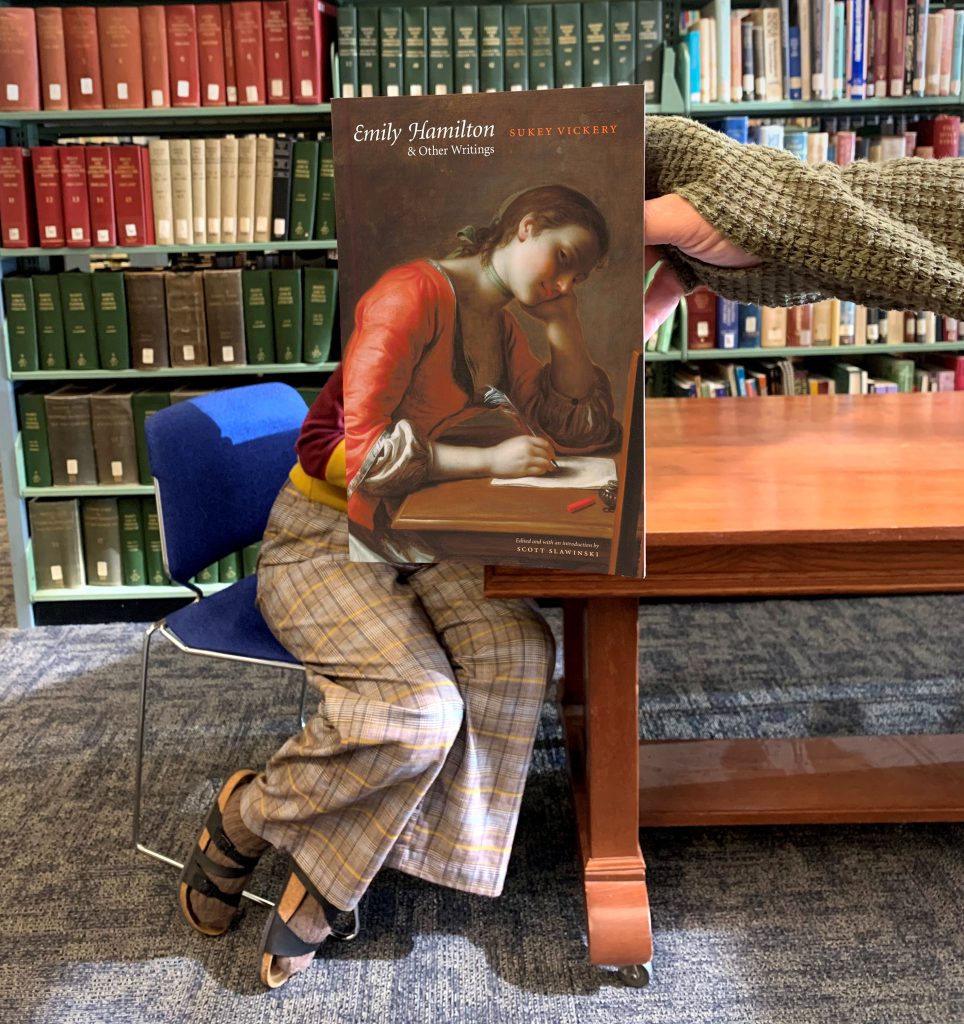
Get your thoughts down on paper just like this week’s #BookFaceFriday, “Emily Hamilton & Other Writings (Legacies of Nineteenth-Century American Women Writers)” by Sukey Vickery, edited by Scott Slawinski (University of Nebraska Press, 2009.) The Nebraska Library Commission’s Collection is always growing; the Nebraska Publications Clearinghouse receives documents every month from all Nebraska state agencies, including the University of Nebraska Press (UNP). UNP books, as well as all Nebraska state documents, are available for checkout by libraries and librarians for their patrons.
The careful editing and cogent and engaging introduction to this volume will guide students and scholars alike, thus helping Sukey Vickery’s work to receive the attention that it deserves.”
—Amy E. Winans, Women’s Studies
“Sukey Vickery’s Emily Hamilton is an epistolary novel dealing with the courtship and marriages of three women. Originally published in 1803, it is one of the earliest examples of realist fiction in America and a departure from other novels at the turn of the nineteenth century. From the outset its author intended it as a realist project, never delving into the overly sentimental plotting or characterization present in much of the writing of Vickery’s contemporaries. Emily Hamilton explores from a decidedly feminine perspective the idea of a woman’s right to choose her own spouse and the importance of female friendship. Vickery’s characterization of women further diverges from the typical eighteenth- and early nineteenth-century didactic of the righteous/sinful woman and depicts, instead, believable female characters exhibiting true-to-life behavior.”
—from the book jacket
Our model this week is a new addition to the Nebraska Library Commission! Welcome to Laura Mooney, our new Federal Documents Staff Assistant. She joins us from the History Nebraska Museum in Lincoln, as their Senior Objects Curator. Laura enjoys reading nonfiction; she’s currently reading a book about Julia Child. She prefers to read physical books, as it gives her a chance to take a break from screens. Along with reading and spending time with her 17 year old cat named Allie, her hobbies include gardening, vintage clothing, and anything related to food (experimenting in the kitchen, learning about food history, etc!) Welcome Laura!
“I’m thrilled to be joining the Nebraska Library Commission, and delighted to be part of the team that is making publications accessible online through digitization. In my first few weeks here I have been digitizing materials from the Nebraska Department of Agriculture and Department on Aging. It’s been fascinating to learn about the depth of information within these collections. There are so many resources that will be useful for scholars, historians, genealogists and more.”
Love this #BookFace & reading? Check out our past #BookFaceFriday photos on the Nebraska Library Commission’s Facebook page!
Friday Reads: Ten Thousand Tries by Amy Makechnie
The other players on the team looked at me funny when I borrowed a ball to take this photo at the end of their practice, but my kid just rolled his eyes and smiled. “Yeah, my mom does stuff like this all the time.” Being a a recurring #BookfaceFriday model has jaded him to the weird things I do with book covers. (He’s even better at lining up the shot than I am now.)
This book is also about a boy whose parents spend a lot of time with him on the soccer field. Golden Maroni’s dad was a pro soccer player, and now coaches the local high school team. His mom coaches Golden’s middle school team – she’s referred to as Coach or Mom depending on the chapter’s setting.
The title refers to Malcolm Gladwell’s assertion in his book “Outliers” that it takes 10,000 hours to achieve mastery of a skill. While Amy Makechnie specifies in her end-of-book acknowledgements that this rule doesn’t apply to sports, our hero Golden is sure that 10,000 hours of soccer practice will make him as phenomenal as his idol Lionel Messi. But off the field, things aren’t going as well.
Lucy, his team co-captain and best friend (and maybe more?), will move soon if Golden can’t drive away her annoying future stepfather. His older sister Jaimes certainly needs another 10,000 hours of driving practice before Golden feels safe riding with her. And worst of all, a year and a half after a surprising diagnosis, Golden’s dad is losing his battle with ALS; no amount of positive thinking and hard work can stop the progression of this terrible disease. It feels like Golden’s whole world is crashing down around him. The Maroni family motto is “We do hard things.” They work hard, play hard, and never give up on each other. But this year will be different, and Golden must learn that letting go isn’t the same as giving up.
This book was chosen as one of the 10 nominees that young adults across the state will read and vote on for the 2023-24 Golden Sower Novel Award next school year.
Makechnie, Amy. Ten Thousand Tries, New York, New York : Simon & Schuster, 2021.
Posted in Books & Reading, General
Tagged Amy Makechnie, books, Friday Reads, Juvenile literature, Reading, realistic fiction, sports fiction, YA, Young Adult
Leave a comment
Book Club Spotlight – A Cuban Girl’s Guide to Tea and Tomorrow
To round out Hispanic Heritage Month, let’s spotlight a book that is as sweet as pastelitos de guayaba! In Laura Taylor Namey’s slow-burn, low-drama romance, A Cuban Girl’s Guide to Tea and Tomorrow, Cuban and English heritage collide over tea, pastries, and familial love. In an interview with Publishers Weekly, Namey explains that her book “hails straight out of my family album… Many places, traditions, foods, and life lessons from my childhood are woven into the story. I tried to take the spirit of people I love, and the truths I learned about identity and legacy and reimagine them into a coming-of-age novel that teens could relate to”. And despite taking place in the cold rain of England, Cuban culture and traditional food are at the forefront of this novel.
As a 2nd generation Cuban immigrant, Lila Reyes has life meticulously planned out. She has an incredible best friend, a long-term boyfriend she adores, and the love of her dear Abuela and her bakery. But when her Abuela suddenly passes away, Lila loses everything. Everything except the certainty in her future as the panadería’s head baker. With her sights firmly set on her future, she tries to push away her depression and trauma, only to end up breaking down mentally and physically. Worried about her health, Lila’s parents send her across the pond to her aunt’s B&B in Winchester, England, for the summer. Soon she is cooking for the whole B&B, exploring the local music scene, making new supportive friends, and growing very close to the tea shop clerk, Orion Maxwell. Orion is not new to grief and is the empathetic and caring shoulder Lila has been hurting for. Together the two navigate their own grief and come to accept what they cannot control while finding the courage to influence what they can, while maybe falling in love along the way.
“You’re painting stars where I colored black holes.”
Laura Taylor Namey
Perfect for a book club of young adult readers whose idea of a perfect fall afternoon is curling up under a blanket with a good book. Despite centering on grief, A Cuban Girl’s Guide to Tea and Tomorrow is not a sad story. It gives the reader space and permission to learn how to feel their emotions without letting them consume everything. Discussion questions with your book group can focus on emotions, Cuban culture, and how interpersonal relationships play an essential part in our lives and keep us healthy. If you’re leading a group of young readers, be careful when discussing the prevalent diet culture in this book. Despite what the characters might say, you don’t need to “earn” a snack or have to “work off” a baked good. Food is nutrition and life. Feel free to explore Cuban food’s wonderfully rich culture and how it can bring families, friends, and even strangers together without feeling “guilty” for enjoying it! So grab your favorite tea and a warm jumper, and dive in!
If you’re interested in requesting this book for your book club, you can find the Book Club Kit Request Form here. (Items must be requested by a librarian)
To see more of our Hispanic/Latino book club titles, visit the link here.
Namey, Laura Taylor. A Cuban Girl’s Guide to Tea and Tomorrow. Atheneum Books. 2020.
Posted in Books & Reading
Tagged book club spotlight, books, Hispanic heritage month, Latinx voices, Reading
2 Comments
Book Club Spotlight – One Hundred Years of Solitude
For Hispanic Heritage Month (September 15-October 15), I wanted to spotlight a particular writing style popularized and, in my opinion, perfected in Latin America. I became interested in Magical Realism through an article on Book Riot about Disney’s Encanto. The article explains Magical Realism as: “having magical/supernatural elements presented in an otherwise mundane setting…Magical Realism does not rely on heavy exposition or narration. Everything, according to the reticent narrator, is as it should be.” And today’s book One Hundred Years of Solitude by Gabriel García Márquez is one of the most famous examples of Magical Realism. Being the second most translated literary work in Spanish after Don Quixote, One Hundred Years is brimming with magic; Flowers raining from the sky, insomnia plagues, and beautiful women simply floating away. Yet, while the characters go about their lives, they don’t seem to realize that the world around them is magical. Everything is as it should be.
The 1967 novel One Hundred Years of Solitude begins with the first of its seven generations of the Buendía family. José Arcadio Buendía, with his wife/cousin Úrsula Iguarán, established an isolated village named Macondo and began to raise their family in that small community. And as the years go by, the family (all named after each other) grows and faces hardships, usually stemming from their ambitions to reach higher and go farther than they are able to. After being visited by the worldly Romani people and wanting to explore what the world has to offer, Macondo eventually grows into a thriving city with a train station and a banana plantation. However, when civil war begins to tear the country apart, and the plantation turns against its workers, the Buendía men and women live and die by their beliefs, and the family name lives on for better or worse. Through a cyclical repetition of misfortunes, battles, and incest, the house of the Buendía stands through the long years with Úrsula as their matriarch. But the family’s fate is controlled by the ceaseless march of time, and ghosts of their past (real and imagined) are waiting at the end of those 100 years.
“Lost in the solitude of his immense power, he began to lose direction”
Gabriel García Márquez
As José Arcadio Buendía built Macondo by following a dream of building a beautiful city of mirrors, Márquez created Macondo to mirror our own world, especially that of Columbia and its imperialists. One Hundred Years of Solitude, while representing many aspects of Columbian life, is also a socio-political critique of Western Imperialism’s effect on Columbia. The banana plantation that overruns the town and its subsequent destruction is based on the Banana Massacre that Márquez experienced as a child. And the long war that takes Colonel Aureliano Buendía away from home is Columbia’s brutal Thousand Days’ War. For a book group, there is no shortage of ways to move your discussion. Topics can range from how Márquez shows the cyclical nature of history. Or how the Buendía family affected each other, all living under one roof for so long. And, of course, how the symbolism of Magical Realism drives the story. You also might need to consult a family tree to reference as you read along.
If you’re interested in requesting this book for your book club, you can find the Book Club Kit Request Form here. (Items must be requested by a librarian)
To see more our our Hispanic/Latino book club titles, visit the link here.
Márquez, Gabriel García. One Hundred Years of Solitude. Harper Collins. 1967.
Posted in Books & Reading
Tagged book club spotlight, books, Hispanic heritage month, Latinx voices, Reading
Leave a comment

